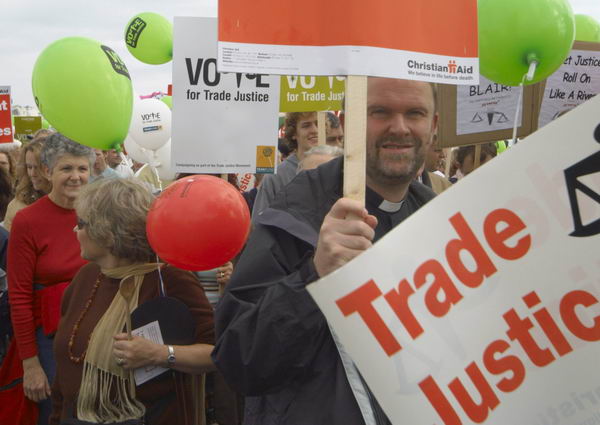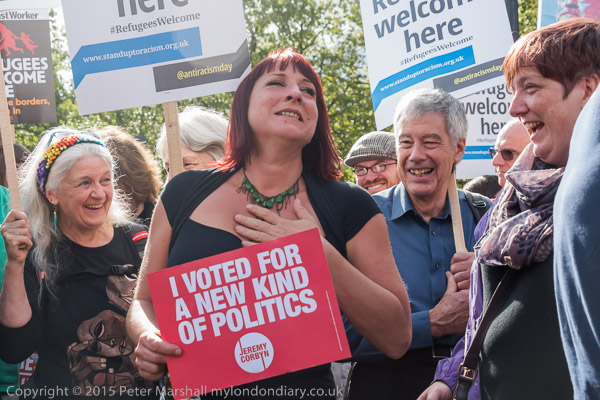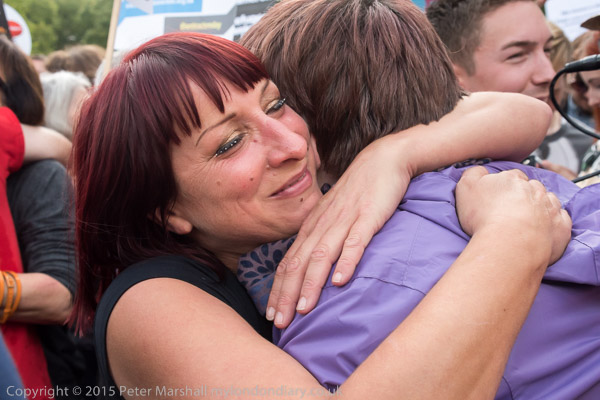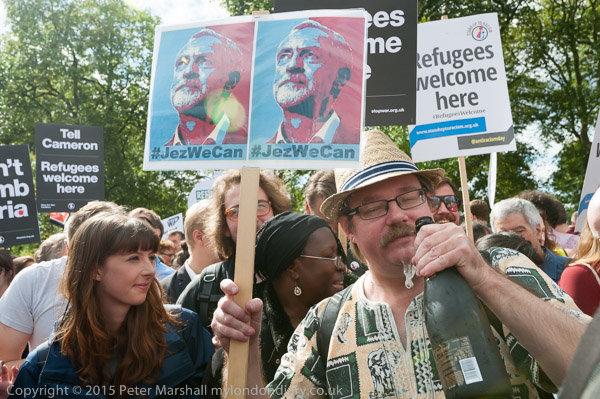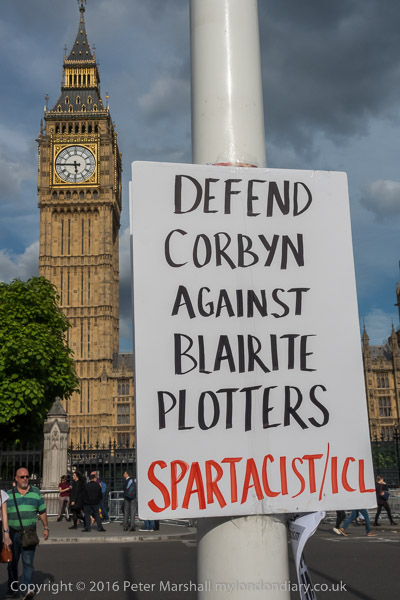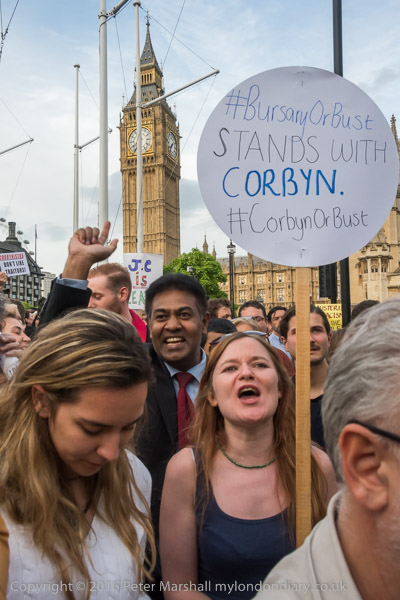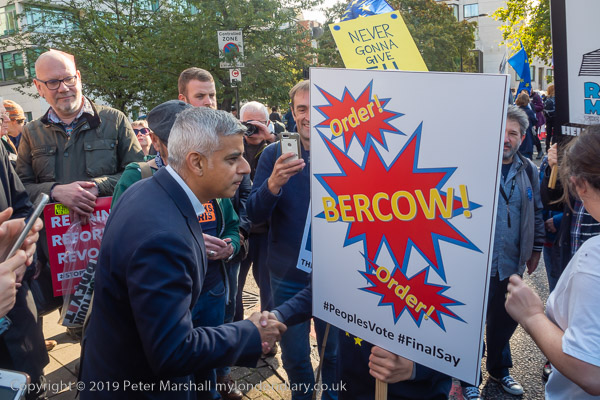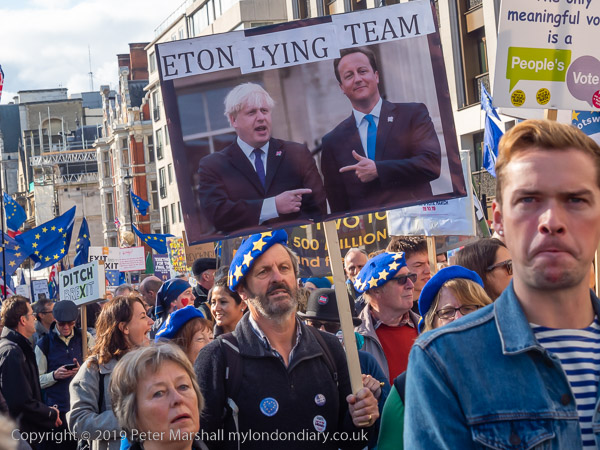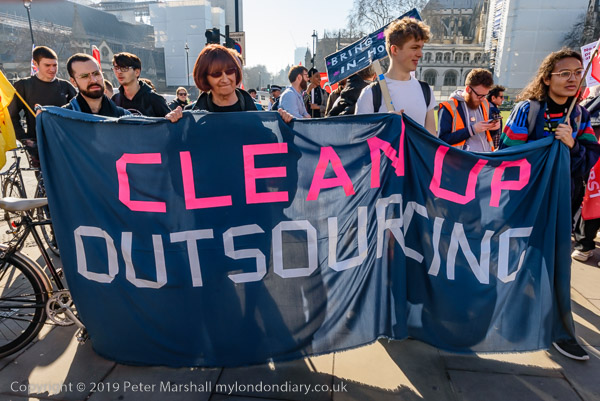Tories Out March: Around 20,000 met outside the BBC in Portland Place on Saturday 1st July 2017 to march to Parliament Square demanding an end to the Tory government under Theresa May.

Most were supporters of the Labour Party and in particular of the then Labour Leader Jeremy Corbyn, who had narrowly failed to win the recent general election, defeated not by the Tories but by sabotage within the party by the Labour right who controlled much of the party mechanism.

The Labour right had been shocked and appalled by Corbyn’s victory in the leadership contest and had done everything they could since then to get rid of him, with orchestrated cabinet resignations and the stoking up of false antisemitism claims combined with behind the scenes actions to ensure the failure of his attempts to improve the way the party tried to deal with such allegations.

We had seen on television the relief felt by some of them as the results came out when after it had begun to look as if Labour had a chance of victory it became clear that the Tories would hang on to a small majority. The last thing they had wanted had been for Corbyn to have won.

Theresa May had scraped in but had then had to bribe the DUP, a deeply bigoted party with links to Loyalist terrorists to give her a working majority.

Her austerity policies had been largely rejected by the electorate and the recent Grenfell Tower disaster had underlined the toxic effects of Tory failure and privatisation of building regulations and inspection and a total lack of concern for the lives of ordinary people.

The protesters – and much of the nation – knew that the Tories had proved themselves unfit to govern. The marchers and the people wanted a decent health service, education system, housing, jobs and better living standards for all.

But not all were happy with Labour policies either, although the great majority of them joined in with the sycophantic chanting in support of Corbyn. But there were significant groups who were also protesting against the housing polices being pursued by Labour-dominated local authorities, particularly in London Boroughs including Labour Southwark, Lambeth, Haringey and Newham.

Huge areas of council housing had been demolished or were under threat of demolition largely for the benefit of developers, selling off publicly owned land for the profit of the developers and disregarding the needs of the residents and of the huge numbers on council housing lists.

One example was “the Heygate at Elephant & Castle, a well-designed estate deliberately run down by the council over at least a decade, but still in remarkably good condition. It cost Southwark Council over £51m to empty the estate of tenants and leaseholders, and in 2007 had valued the site at £150m, yet they sold it for a third of its market value to developers Lendlease for £50m.”
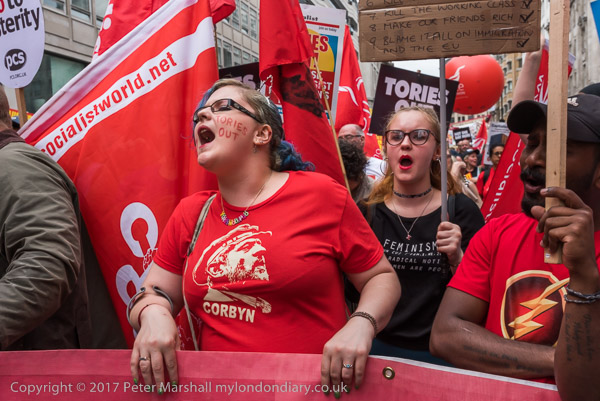
The estate had been home to over a thousand council tenants and another 189 leaseholders. Around 500 tenants were promised they would be able to return to to homes on the new estate – but there were just 82 social rented homes. The leaseholders were given compensation of around a third of the price of comparable homes in the new Elephant Park – and most had to move miles away to find property they could afford.

In 2017 Haringey was making plans to demolish around 5,000 council homes, roughly a third of its entire stock under what was known as the Haringey Development Vehicle (HDV) with developers Lendlease. Plans here prompted a revolt in the local area led by Labour members in the pro-Corbyn Momentum group who gained control of the council in 2018 and scrapped the HDV.

Among those leading protests against Labour’s Housing Policy was Class War who have been active in many of the protests over housing. I photographed them having a little fun with the march stewards, but unfortunately missed the scene at the rally in Parliament Square when Lisa Mckenzie confronted both Len McCluskey, General Secretary of Unite the Union and Labour Leader Jeremy Corbyn asking them the simple question ‘When are you going to stop Labour councils socially cleansing people out of London?’.

Both men ignored her, walking past without pausing to answer and “the small Class War group was surrounded by Labour Party supporters holding up placards to hide them and idiotically chanting ‘Oh, Je-re-my Cor-byn! Oh, Je-re-my Cor-byn!’. But eight years later, now in power led by Starmer and Angela Rayner, Labour seems determined to make much the same mistakes in its housing policy.
More at Tories Out March.
Flickr – Facebook – My London Diary – Hull Photos – Lea Valley – Paris
London’s Industrial Heritage – London Photos
All photographs on this page are copyright © Peter Marshall.
Contact me to buy prints or licence to reproduce.





